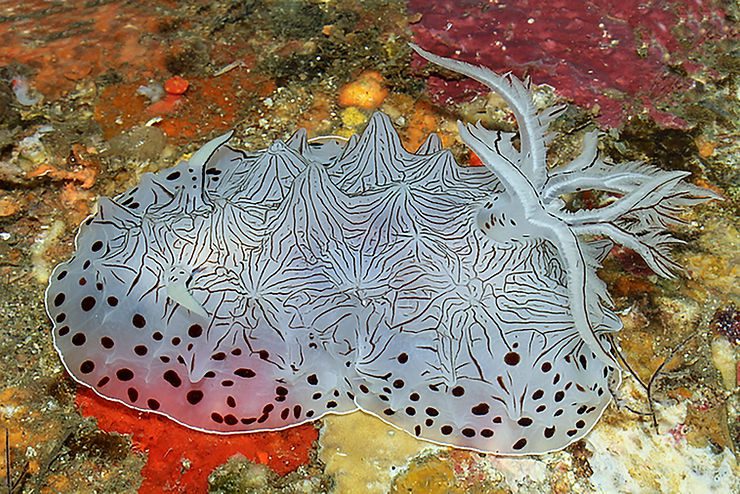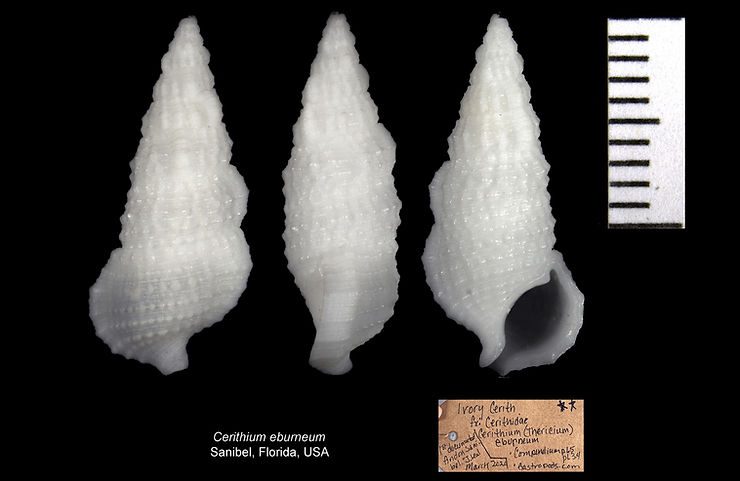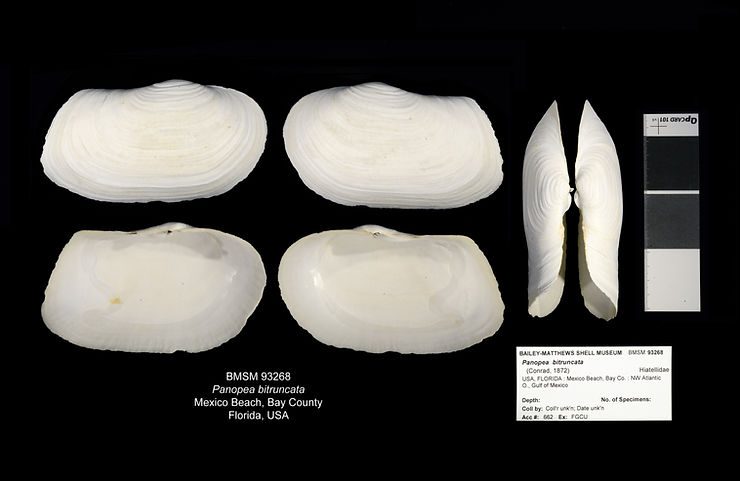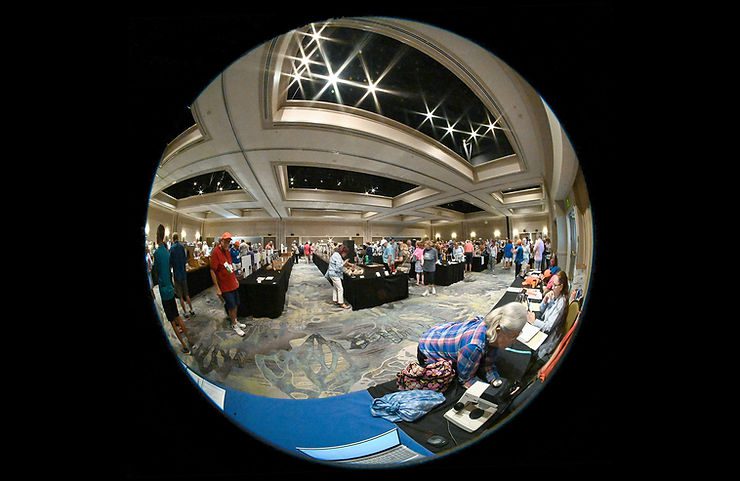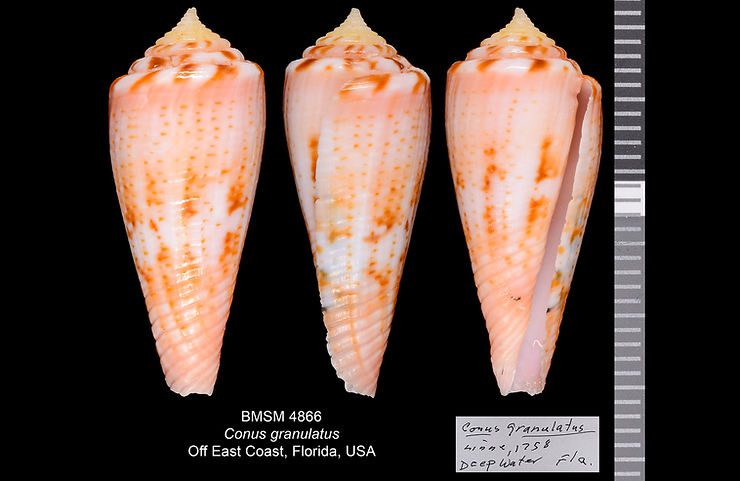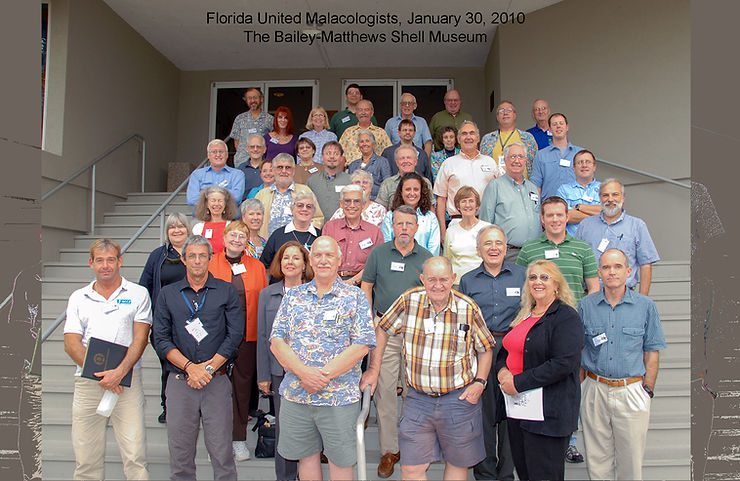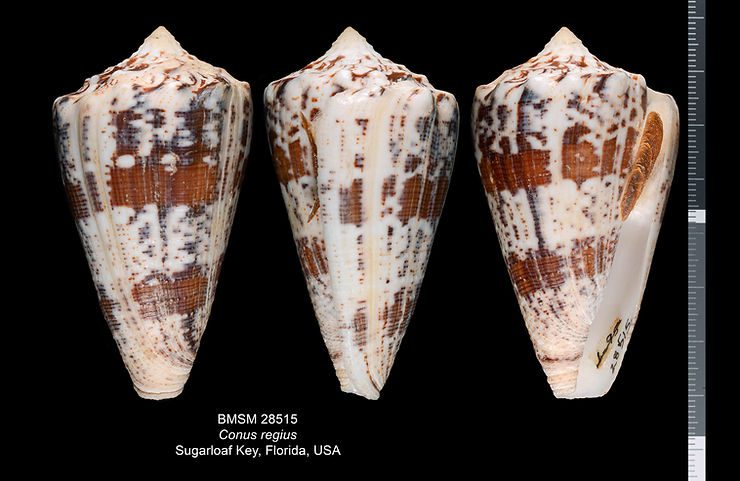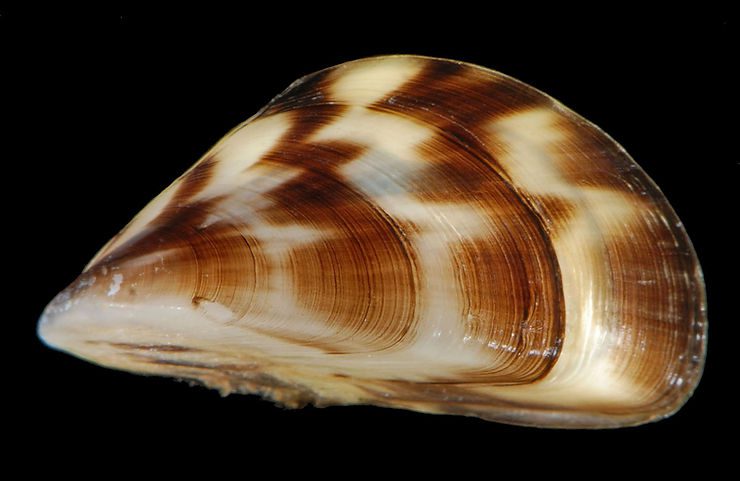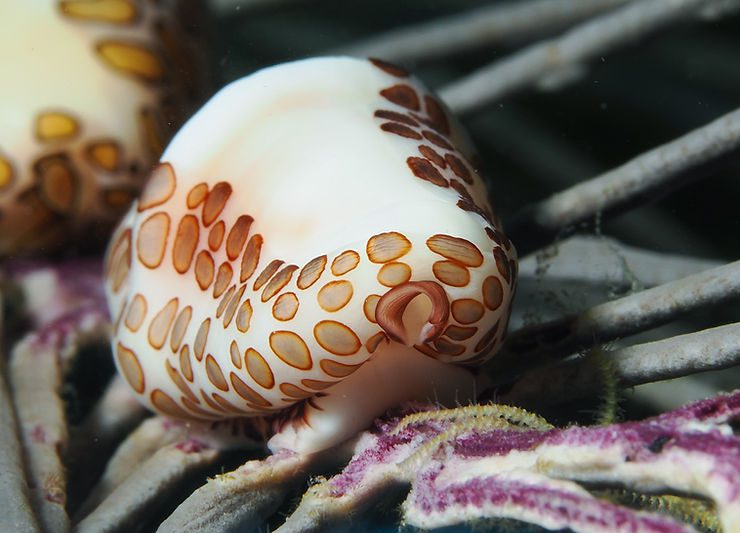
The Gorgeous McGinty’s Cyphoma
On March 14, underwater photographer Ariane Dimitris took pictures of a couple of living Cyphoma mcginty off Pompano Beach, east coast of Florida. To me, the McGinty Cyphoma is the most attractive among the several species of the genus Cyphoma found in the western Atlantic. I love the color pattern of its mantle (flap of skin that makes and covers the shell), with its round pink-gray spots. The photo above shows the anterior part of the snail with the siphon in the center (Thanks to Ariane for
